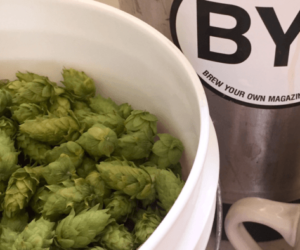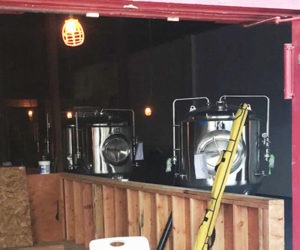Kegs Revisited: Turning Pro Part 26
You will need one keg hooked up to the handle, at least one keg standing by for when the current keg goes empty, and another sitting empty, waiting to be picked up from the account or returned by the distributor.
Don’t think you can get by with less. If you think you might be able to get kegs to accounts the minute they run out, then you also don’t care if they have your beer for sale. They are not going to wait for you to
deliver a new keg. They need to keep those handles pouring beer and they will put a another beer on right away. Now you’ve been bumped. Do you suppose that other brewery had more than one keg available to the account? Probably.
Getting empty kegs back can be a lot slower than anticipated as well. If you spend all your time driving around to accounts, you can get them quickly. Of course, you have other things to do, so the kegs sit for a few days. If you are working with a distributor, plan on it taking even longer to get your kegs back. Even when you get those empty kegs back, they are not clean and ready to fill. In a way, that pile of dirty kegs you haven’t cleaned yet is part of your float.
And you can’t cut the numbers close either. You can’t calculate that you will need 300 kegs and buy 300 kegs, no no no. You need to predict how many kegs you are going to need next month or next quarter, based on how long it takes to get more kegs from your supplier. Kegs don’t show up instantly when you decide you need more.
So, you realize the need for a lot of kegs. Currently, new kegs cost around $100 to $150, depending on size, condition, shipping, etc. Yes, your tiny little brewery really does have $40,000 tied up in kegs.
The funny thing is, many brewers don’t realize the impact the keg deposit has on their bottom line. I had someone tell me, “The deposit amount doesn’t matter, because it doesn’t cover the replacement cost and we don’t get to keep the deposit money.” Au contraire. Maybe a day comes when you have to give the money back to one individual, but you are missing the big picture. You need to think of the deposit in terms of the float. The float is always out there and you are always holding the deposits on that float. Maybe one place returns a couple kegs, but you’ve sold more beer to some other place at the same time. The float may grow or shrink, but generally, you can consider that money an offset of the cost of the keg purchase price. If you have 200 of your 300 kegs out in float, you are sitting on $8000 with a $40 deposit price. There might be some legal responsibility to keep enough funds on hand to cover refunds of deposits, but that doesn’t mean those funds aren’t there in your account for day to day business. Effectively, it is an offset on the cost of your keg fleet, changing the impact from $40,000 to $32,000. Every bit helps.
At the risk of you thinking I am obsessed with kegs, I am going to write about them one more time, because I think many people don’t understand a fundamental aspect of kegs in business: float, the cost of float, and the deposit.



